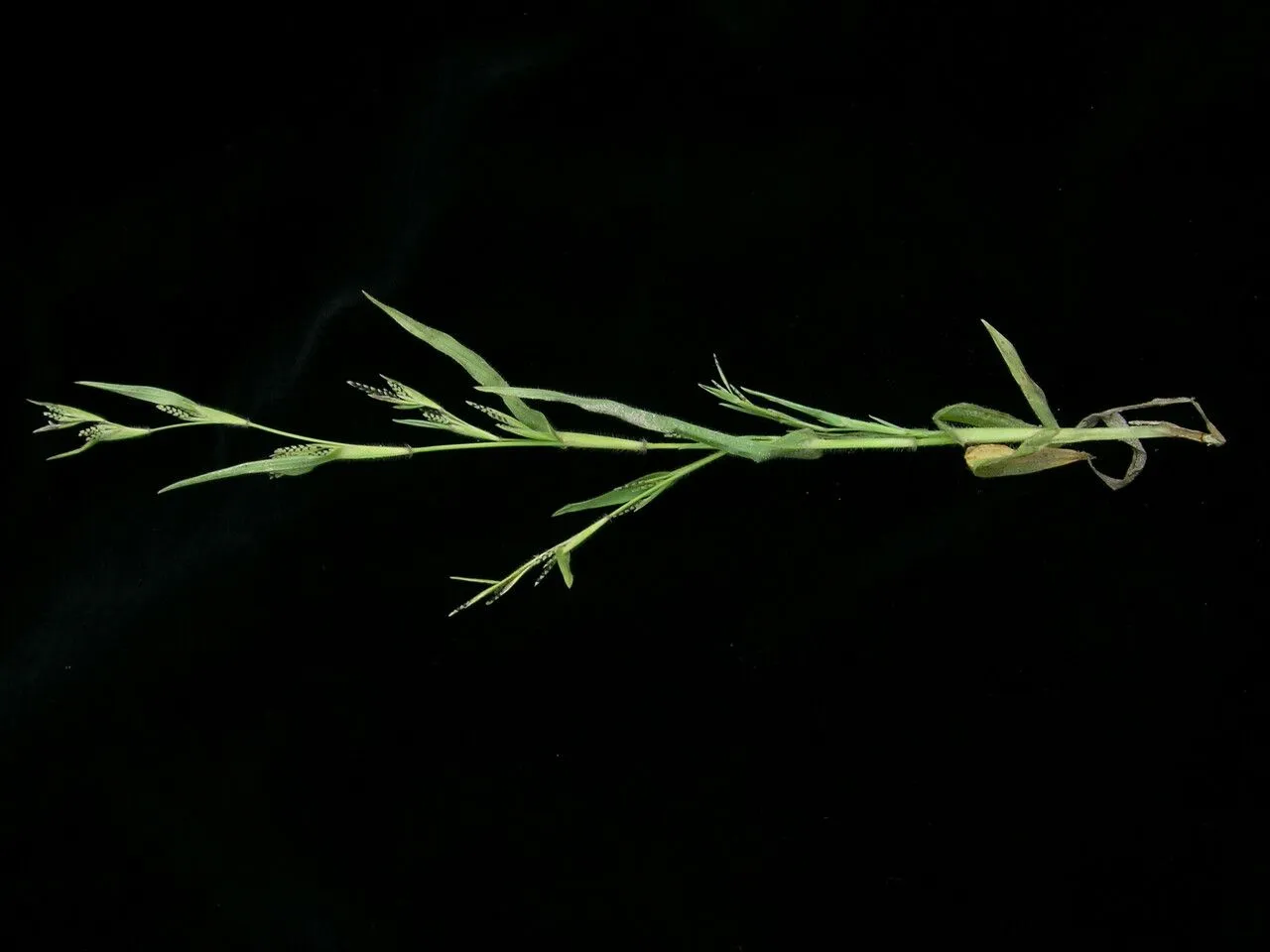
Author: (L.) Kuntze
Bibliography: Revis. Gen. Pl. 2: 776 (1891)
Year: 1891
Status: accepted
Rank: species
Genus: Hackelochloa
Vegetable: False
Observations: Trop. & Subtrop. Old World
Pitscale grass, scientifically known as Hackelochloa granularis, is a fascinating species belonging to the Poaceae family, renowned for its adaptability to tropical and subtropical climates of the Old World. Described meticulously in the significant botanical reference “Revis. Gen. Pl.” published in 1891 by Kuntze, this grass holds a noteworthy position in the rich tapestry of grass species.
The Hackelochloa granularis, often located in diverse habitats spanning continents, showcases the hallmark resilience and versatility of grasses adapted to warmer regions. Its distinctive granular texture likely contributes to its name “Pitscale,” providing not only a point of interest for botanists but also for those intrigued by the detailed morphology of grass species.
The Poaceae family, to which Pitscale grass belongs, is instrumental in ecological balance and provides numerous benefits to both wild ecosystems and cultivated landscapes. This family includes some of the world’s most critical crops, emphasizing the importance of understanding and preserving its wide variety of species, including Hackelochloa granularis.
Observations in various tropic and subtropic regions indicate that Pitscale grass adapts well to sunny locations with adequate moisture, thriving in soils that range from dry to moderately wet. This adaptability makes it a subject of study for ecologists and agricultural experts alike, who seek to harness its strengths for erosion control, habitat restoration, and possibly forage.
In conclusion, Hackelochloa granularis stands out not just for its botanical characteristics but also for its resilience and ecological value. As we continue to learn from and rely on the world of grasses, Pitscale grass serves as a reminder of the intricate and beneficial relationships we share with these remarkable plants.
En: Pitscale grass, Pit-Scale Grass, Grass
Taken Oct 1, 2009 by OTS – Oviedo-Brenes, Federico (cc-by-nc-sa)
Taken Oct 1, 2009 by OTS – Oviedo-Brenes, Federico (cc-by-nc-sa)
Taken Oct 1, 2009 by OTS – Oviedo-Brenes, Federico (cc-by-nc-sa)
Taken Oct 1, 2009 by OTS – Oviedo-Brenes, Federico (cc-by-nc-sa)
Taken Nov 22, 2004 by Royal Botanic Garden Edinburgh – Anonymous (cc-by-nc)
Taken Nov 22, 2004 by Royal Botanic Garden Edinburgh – Anonymous (cc-by-nc)
Taken Nov 22, 2004 by Royal Botanic Garden Edinburgh – Anonymous (cc-by-nc)
Taken Nov 22, 2004 by Royal Botanic Garden Edinburgh – Anonymous (cc-by-nc)
© copyright of the Board of Trustees of the Royal Botanic Gardens, Kew.
© copyright of the Board of Trustees of the Royal Botanic Gardens, Kew.
© copyright of the Board of Trustees of the Royal Botanic Gardens, Kew.
Taken Nov 22, 2004 by Royal Botanic Garden Edinburgh – Anonymous (cc-by-nc)
Growth habit>: Graminoid
Family: Myrtaceae Author: (F.Muell.) K.D.Hill & L.A.S.Johnson Bibliography: Telopea 6: 402 (1995) Year: 1995 Status:…
Family: Rubiaceae Author: Pierre ex A.Froehner Bibliography: Notizbl. Bot. Gart. Berlin-Dahlem 1: 237 (1897) Year:…
Family: Sapindaceae Author: Koidz. Bibliography: J. Coll. Sci. Imp. Univ. Tokyo 32(1): 38 (1911) Year:…
Family: Asteraceae Author: A.Gray Bibliography: Pacif. Railr. Rep.: 107 (1857) Year: 1857 Status: accepted Rank:…
Family: Fabaceae Author: Medik. Bibliography: Vorles. Churpfälz. Phys.-Ökon. Ges. 2: 398 (1787) Year: 1787 Status:…
Family: Aspleniaceae Author: (Cav.) Alston Bibliography: Bull. Misc. Inform. Kew 1932: 309 (1932) Year: 1932…